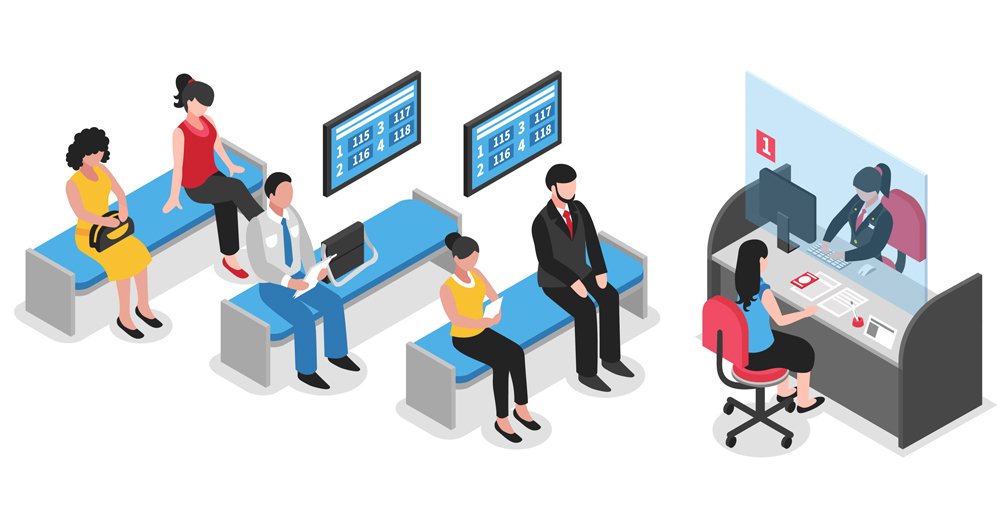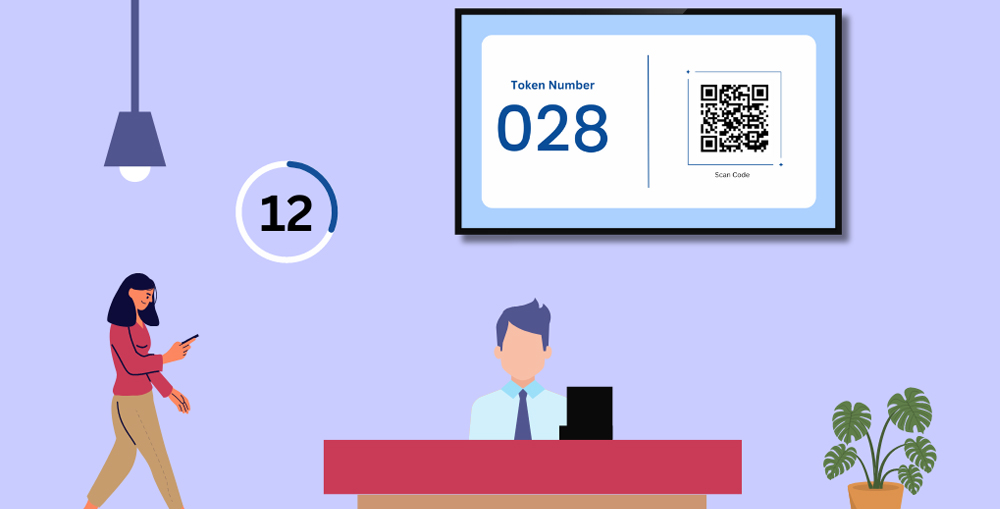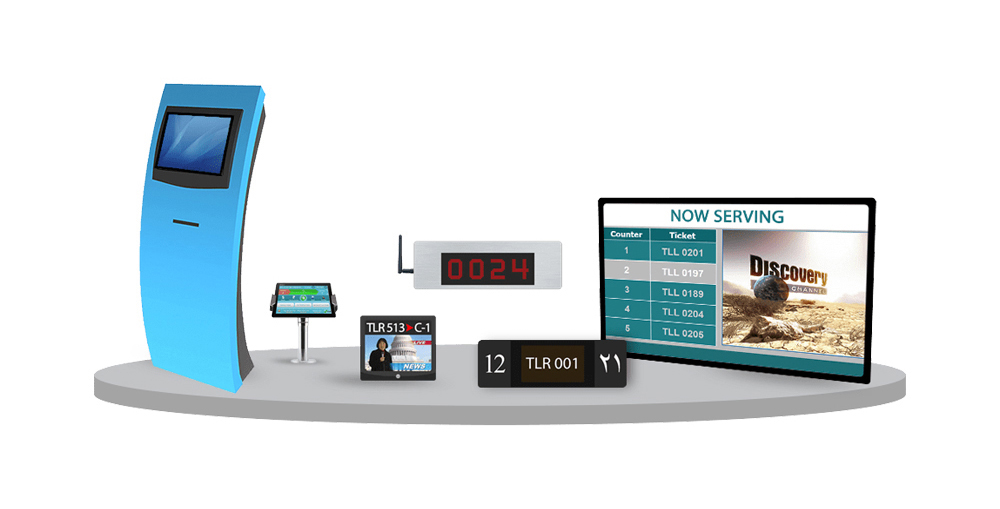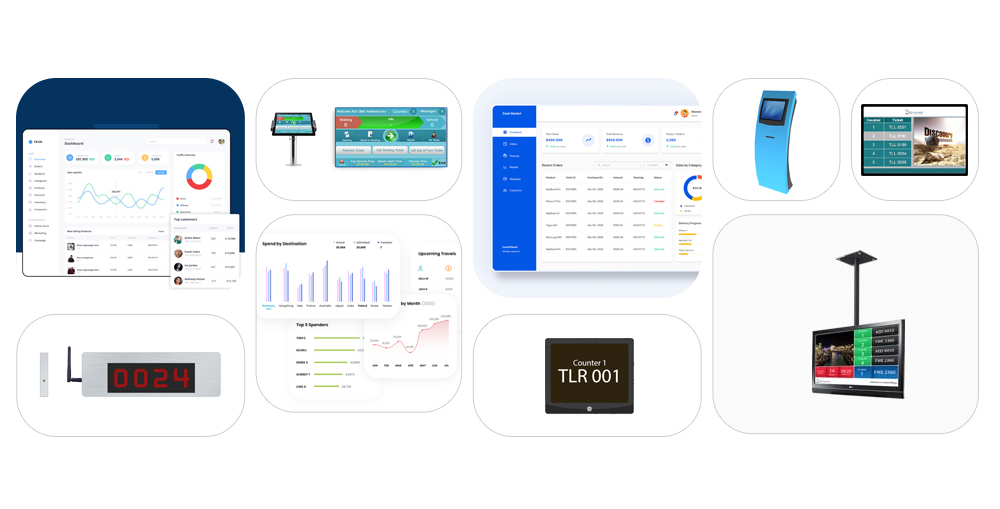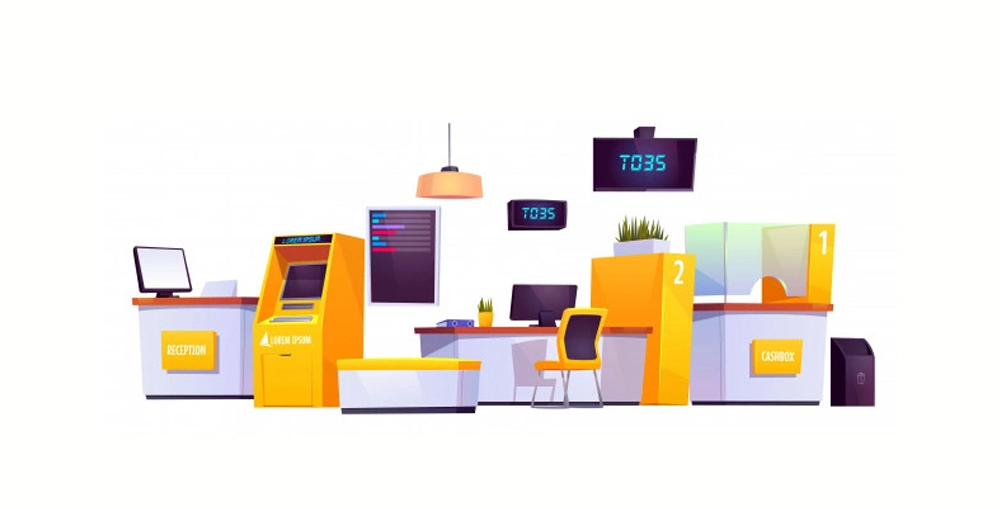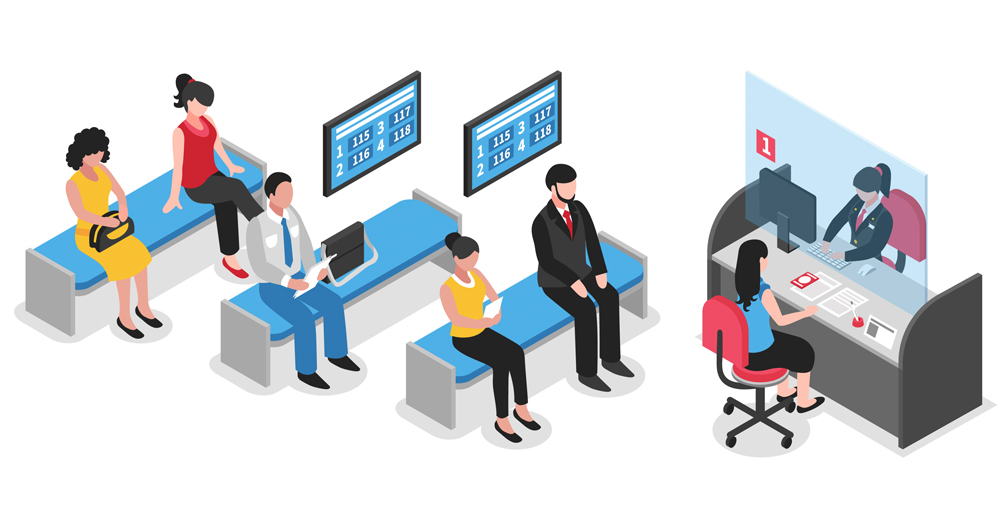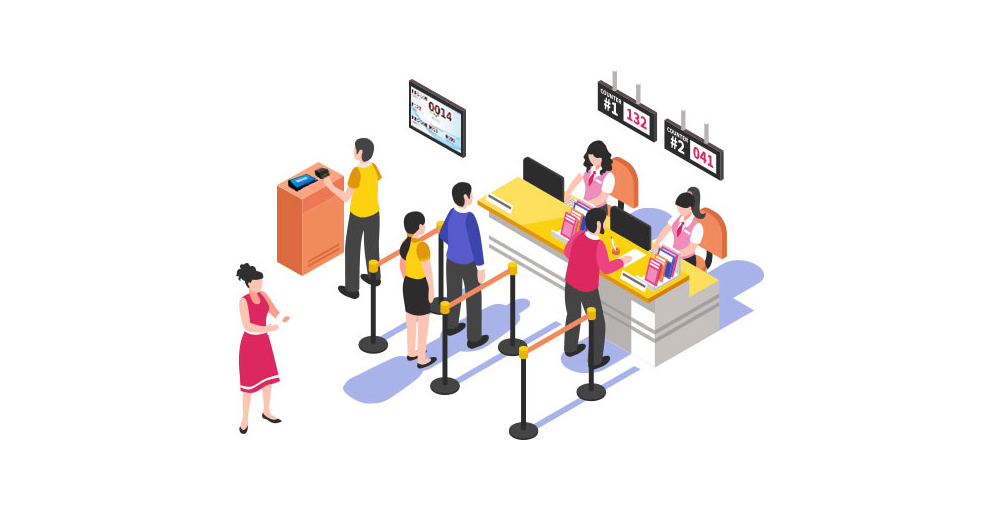Businesses in service sector always struggle with large daily footfall, where the customer wait time is one of the most crucial aspect of the service. Longer wait times, undermines customer experience and results in poor customer satisfaction. The customer satisfaction help businesses gain customer trust and loyalty, which is an essential component of long-term sustainable business growth. Businesses operating in Dubai, Sharjah, Abu Dhabi and all around the UAE are well aware of the importance of the waiting experience, a digital queue management system is a common sighting in customer facing environments. However, when it comes to a queue management system there are a variety of different solutions available for businesses.
A queue management system is technology-based solution which combines both hardware and software components and provide a systematic approach to manage daily footfall. It is capable of automating several internal processes and enhances customer journey. However, even if you have an effective queue management system in place your customers still require to wait for some time. A virtual queuing system on the other hand is the most modern form of digital queue management system, it offers extraordinary features which can deliver extraordinary results setting up new benchmarks for the industry. In this blog we will discuss how virtual queuing systems are redefining the waiting experience.
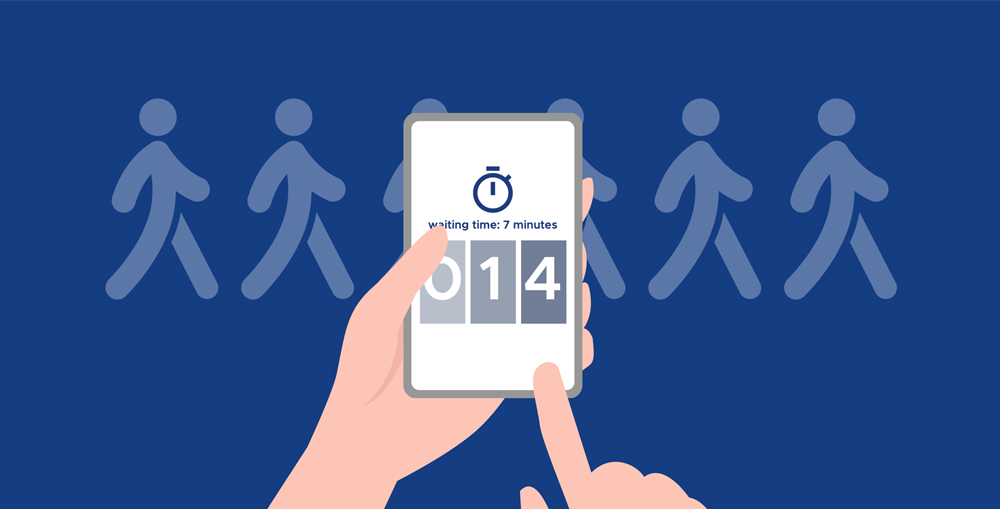
What is a Virtual Queuing System?
A virtual queuing system or commonly known as virtual queue management system is a modern form of digital queue management. It is equipped with advanced technologies and the primary difference between virtual queuing system and a traditional digital queue management system is that it completely eliminates the need of physical queues, and it can greatly reduce customer wait time. The waiting experience was a big challenge for businesses, with a virtual queuing system this can be managed seamlessly. The virtual queue management system is integrated with latest communication technologies, enhances customer experience by offering them more freedom and control over their waiting experience, this also enable customers to engage in other activities while anticipating their turn.
It is this freedom and control that delivers more satisfactory customer experience. The virtual queuing system enable customers to sign-up remotely using their smartphones, web portals, mobile apps, SMS, QR Code or even using WhatsApp. The digital token is issued to the customers and all the queuing details are relayed to them via real-time communication channels. Customers can view all the details on their smartphone apps, online customer portals, and WhatsApp chats and even through SMS, enabling them to plan their visit accordingly. Most of the time customers arrive precisely when their turn comes, it means there is literally no wait time and the customers can get serve immediately as they arrive.
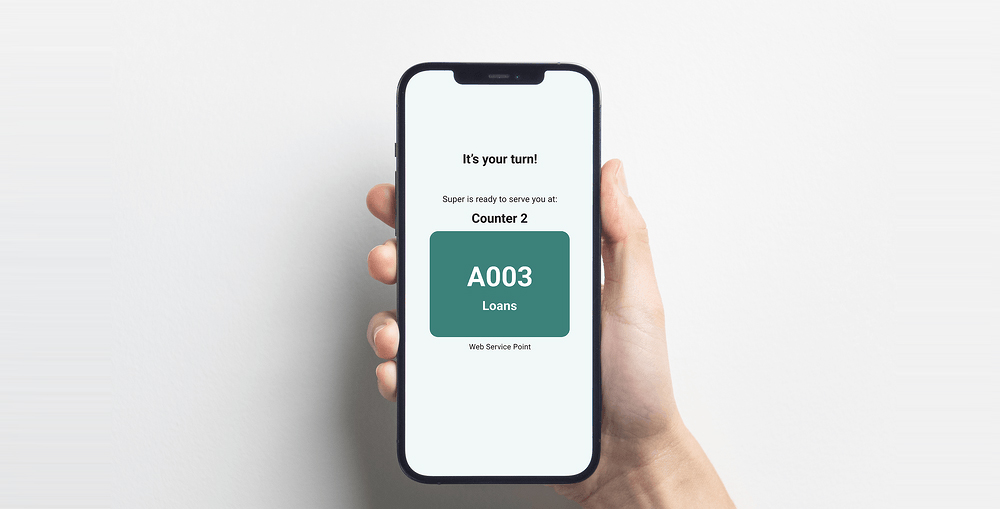
What Makes Virtual Queuing System Ideal for Customer-Centric Businesses?
The virtual queuing system is ideal for customer-centric businesses as they leverage the most-modern cutting-edge technology to streamline customer wait time. The customers are provided with digital virtual queues, hence they are not required to wait in physical lines. Furthermore in traditional queue management the customer flow is slow, the physical lines have their own challenges, which are frustrating for the customers at the same time such activities keep staff engages, which further have toll on the customer wait time. The virtual queuing system also offers digital tickets, which are issues through modern communication platforms. The customer’s spot is served through many channels, and the customers are not bound to physically be at the business premises. They can book their spot remotely and get served at their turn accordingly. The virtual queuing system offers:
- Enhanced Customer Experience
- Better Resource Management and Higher Staff Performance
- More Visibility and Control over Customer Flow and Queuing Process
- Advanced Administrative Features for Agents and Managers
- Customer Journey Automation Tools
- Better Communication and Real-time Information
- Advanced Business Intelligence Data and Analytics
The virtual queuing system also utilize digital channels to provide live queuing data such as how many customers are to serve before your turn, how many customers are waiting behind you, what counters are active, and how much estimated time is remaining to your turn. All these information allow customers to engage in other activities while their spot is moving forward in the virtual queues. This freedom and control can greatly minimize the wait time and enhance customer experience while boosting employee performance and preventing crowd formation.
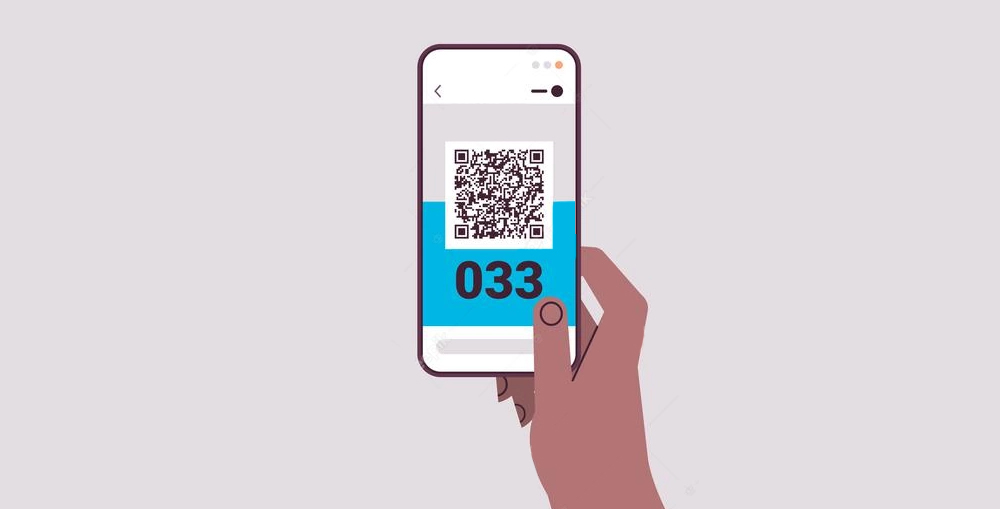
What are the Key Features of Virtual Queuing System?
From technical stand point the virtual queuing systems are way to advance than the traditional digital queue management systems. The virtual queue management systems are one of the most transformative technology revolutionizing how businesses in Dubai, Sharjah, Abu Dhabi and all around the UAE are managing their customer flow, and queuing experience. Here are the key features of a modern virtual queuing system which make them ideal for customer-centric businesses and organizations:
- Seamless Integration: The virtual queuing system can integrate seamlessly with existing IT infrastructure and third-party software. Whether it is integration with communication channel, online web portals, smartphones apps, customer database, POS, appointment booking management systems, or central information system the virtual queuing systems can be integrated with them all using a simple API-based integration method.
- Real-time Updates: The integration with several channels and apps, enable virtual queuing systems to provide real-time updates and information about their position in the queues, current queuing stats, counter details, estimated wait time and any change in their spot. The real-time updates are also provided for the agents and the management which give them upper-hand in managing the customer flow and optimizing the efficiency.
- Flexible Sign-In: The customers are given several mediums to sign-in, they can use web portals, smartphone apps, and appointment booking modules, customer portals, websites, email, SMS, WhatsApp and many more. That is not all, the customers can also schedule their visit as per their comfort. The virtual queuing system provides them historical data, expected foot fall at a particular time, and available slots to let customers setup their schedule easily.
- Elevated Customer Experience: The intuitive and interactive features of a virtual queuing system along with its ability to seamlessly manage customer journey can greatly raise customer satisfaction. Less wait time, flexibility and control over their interaction, congestion and crowd prevention mechanisms, real-time information and alerts can greatly enhance customer experience and help businesses manage customer flow with higher efficiency.
- Personalized Alerts and Notifications: The virtual queuing system is already integrated with customer databases, it can identify customers, and it can keep record of all interactions, which helps it to understand customer preference and past interaction. This enable virtual queuing system to personalize alerts, notifications and messages towards customers and through their preferred communication channel, adding value to customer happiness and satisfaction.
- Customer Journey Automation: The virtual queuing system comes with a powerful software application which is built on smart algorithms and AI (artificial intelligence). The virtual queue management system software can automatically manage customer journey from issuing them a digital ticket to allocating them to a service counter, managing communication, sending alerts, and even taking feedback at the end is a fully automated manner.
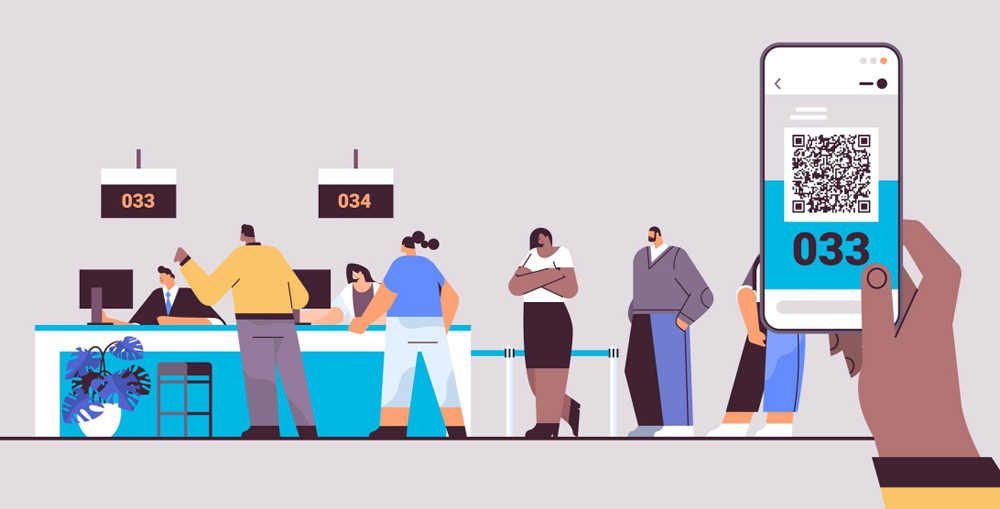
A virtual queuing system is a great tool to enhancing customer experience, managing customer flow and customer journey and elevating service quality. Where it offers several features that directly impact customer experience it also offer several benefits for the business from administration stand point:
- Enhanced Operational Efficiency: The virtual queuing system can greatly enhance operational efficiency. It has ability to completely automate the customer journey and customer flow management processes which eliminate human intervention in relevant processes enabling better resource management. The digitalization and automation drive productivity and can greatly enhance operational efficiency.
- Enhanced Employee Performance: Where the digital solutions can boost performance by introducing automation and digitalization, the human factor still impacts the operations. The virtual queuing system can greatly enhance employee performance by streamlining customer flow, automating several processes and reducing employee workload. This also allow service agents and employee to focus on their primary and more productive tasks.
- Scalability and Customization: The virtual queuing systems are built on advance technologies which hare very friendly toward supporting emerging needs, and enabling businesses to scale and grow at a rapid pace. As each business is different, have different goals, and preferences, the customization is which enable virtual queuing systems to align perfectly with the unique and exclusive business needs. Which also makes them more effective and efficient queuing solution.
- Easy System Integration: The virtual queuing systems are designed to support business’s integration needs. In the most modern business IT infrastructure where all software, tools and solutions are expected to work as a part of a bigger body, serving the high-level organizational goals, the third-party system integration is an essential component. The virtual queuing systems offer flexible and easy system integration through APIs and Secure Web Services.
- Centralized Management Mechanism: The virtual queuing system comes with a central server-side application which is typically connected with all branches. The centralized management and administrative tools enable real-time queuing data with historical data and predictive analysis. All these tools aid management with administrative tasks and also help them immediately rectify bottlenecks and enable them to take preventive actions to ensure smooth customer flow.
- Business Intelligence Data: The business intelligence data is a crucial part of modern business operations. A virtual queuing system can produce a great amount of valuable business intelligence data including statistical and analytical data collected form all touch points throughout the customer journey along with employee performance KPIs, and customer feedback. Businesses can also generate customized reports and use in-built analytical tools to incorporate this data into their decision making processes.
A virtual queuing system is a very powerful tool for modern day businesses. It can greatly improve customer experience and satisfaction. The virtual queuing systems also help businesses effectively manage their employees and customer service centers with highest level of control and visibility.
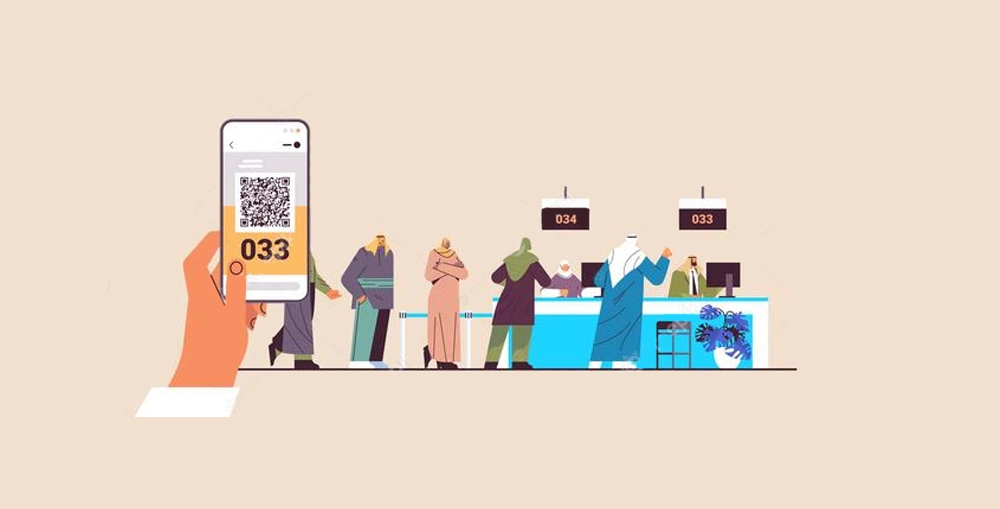
Conclusion
The virtual queuing systems are completely redefining the waiting experience. The customer wait time is always one of the biggest challenge for both businesses and customers. Businesses in Dubai, Sharjah, Abu Dhabi and all around the UAE are utilizing digital queue management systems for more than two decades now, however, the virtual queuing system has completely revolutionized. Enabling customers to sign-in to virtual queuing by utilizing any easy-access remote medium offers more freedom and control. Businesses can also integrate virtual queuing system with existing web portals, smartphones, smartphone apps, SMS, email, WhatsApp and various other channels which can be used for sign-in as well as acquiring latest real-time queuing updates. The virtual queuing system also provides direct communication between the service agents and the customers along with automated personalized alerts and notifications. These features offer utmost control and freedom over customer interaction and it completely eliminates the need of being physically present at the business premises.
The virtual queuing systems are not only good at reducing customer wait time and delivery excellent customer experience but they also offer many benefits for the staff and management too. The employee performance and service quality can be greatly enhanced by implementing a virtual queuing system. In this blog we gave a briefed introduction to virtual queuing systems and the key features and benefits business can leverage to deliver a satisfactory customer experience. If you want to learn more about the subject or if you want our help to design a bespoke virtual queuing system for your business or organization, please feel free to contact us through our Contact Us page or leave a comment in the comment box below and we will get in touch with you soon.
